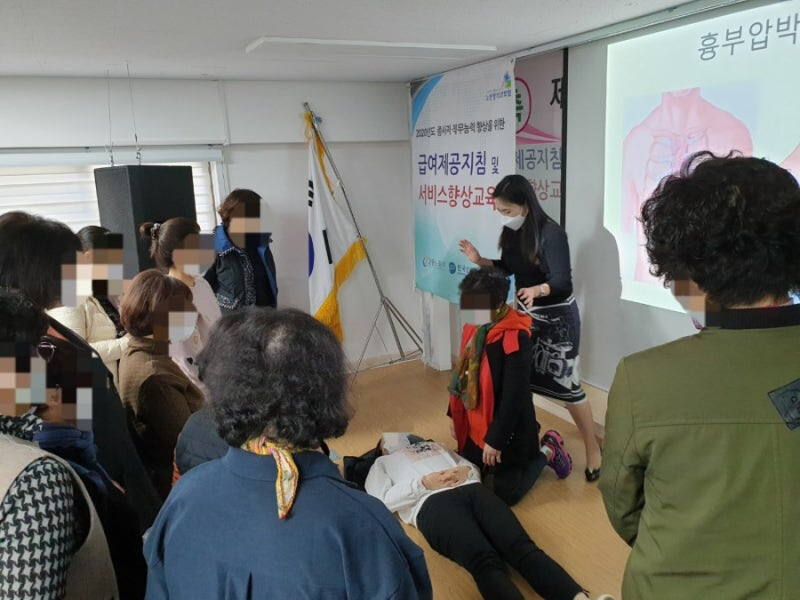
SEOUL, South Korea – The Seoul Metropolitan Government is set to significantly expand its senior care infrastructure, planning to add a total of 225 new elderly care facilities by 2040. This ambitious initiative will include 85 public and 140 private facilities, with a notable strategy involving the conversion of struggling daycare centers into senior care homes. This move comes as Seoul braces for its super-aged society status, projected to be reached in July of this year.
The comprehensive plan, dubbed the '9988 Seoul Project,' was unveiled by Seoul Mayor Oh Se-hoon at a press briefing on May 26. The project title, "9988," is a Korean saying that encapsulates the wish to "live long and healthy until 99." With a substantial total investment of 3.4 trillion won (approximately $2.5 billion USD), the project aims to address the rapidly growing needs of the city's elderly population. Beyond care facilities, the plan also includes the provision of 23,000 senior-friendly housing units and the creation of 330,000 senior jobs.
Addressing the Demographic Shift: A Four-Pillar Strategy
The '9988 Seoul Project' is structured around four key areas and ten core tasks, designed to create a more age-friendly urban environment:
Strengthening Community-Centered Care and Health Systems: This pillar focuses on expanding both the physical infrastructure and the support networks for elderly care.
Ensuring Economic Security in Old Age: This involves creating ample employment opportunities and financial support mechanisms for seniors.
Promoting Social Participation and Leisure Activities: The goal here is to keep seniors engaged and active within the community.
Creating an Age-Friendly Urban Environment: This encompasses adjustments to housing, transportation, and public spaces to better suit the needs of an aging population.
Expanding Care Infrastructure: From Daycare to Elder Care
A core component of strengthening the care system involves the strategic expansion of care facilities. Seoul plans to establish 85 new public silver care centers (senior care facilities) by securing land through public contribution schemes in redevelopment and reconstruction projects. Additionally, 140 private silver and day care centers will be added.
A particularly innovative approach is the proposal to convert struggling daycare centers into senior care facilities. The city will provide project funding and licensing consultation to facilitate this transition. This initiative addresses two pressing social issues simultaneously: the declining birthrate leading to daycare center closures, and the increasing demand for elderly care. By repurposing existing infrastructure, Seoul aims to optimize resource allocation and accelerate the expansion of care services. This conversion strategy also potentially reduces the time and cost associated with new construction.
Boosting Senior Employment and Economic Independence
To ensure economic stability for its elderly citizens, Seoul is making a significant push to expand job opportunities. The city aims to create 300,000 senior jobs in the public sector and 30,000 in the private sector by 2040. These jobs will primarily focus on essential community services such as caregiving, meal support, and safety inspections. This initiative not only provides income but also promotes social engagement and contributes to the well-being of the community.
To encourage private sector participation, Seoul will offer up to 60 million won (approximately $44,000 USD) to private companies that hire seniors, specifically for improving working environments. Additionally, the city will operate senior internship programs to facilitate the reintegration of older workers into the workforce and provide them with new skills and experiences. This multifaceted approach seeks to leverage the experience and wisdom of the elderly, transforming them from a burden into a valuable economic resource.
Enhancing Senior Housing and Leisure Facilities
Recognizing the importance of suitable living environments, Seoul plans to supply 23,000 senior-friendly housing units. To incentivize private developers, the city will offer various incentives, including relaxed floor area ratio regulations. These housing units will be designed with features that cater to the specific needs of older adults, such as barrier-free access, emergency call systems, and integrated community services.
Furthermore, to promote social participation and healthy aging, the city plans to significantly expand leisure facilities. The number of park golf courses, currently 33, will be increased to 150 by 2040. Park golf is a less strenuous form of golf that is popular among seniors, providing both physical activity and social interaction opportunities. This expansion aligns with the project's goal of fostering a vibrant and active senior community.
Seoul's Impending Super-Aged Society
Seoul's proactive measures come at a critical juncture. The city is projected to enter a super-aged society in July of this year, meaning that 20% or more of its total population will be aged 65 or older. As of April this year, the proportion of individuals aged 65 and above in Seoul's total population stood at 19.8% (1.84 million people). Projections indicate that by 2040, one out of every three Seoul citizens will be 65 or older.
Mayor Oh Se-hoon emphasized the urgency of these initiatives, stating, "We will provide support by combining penalties and incentives to ensure that essential infrastructure like senior care facilities is expanded early in the community." This statement underscores the city's commitment to not only invest financially but also to create a regulatory environment that facilitates the rapid development of necessary infrastructure.
The '9988 Seoul Project' represents a forward-thinking and comprehensive approach to addressing the challenges and opportunities presented by an aging population. By focusing on care, economic security, social engagement, and an age-friendly environment, Seoul aims to set a global benchmark for successful aging in a megacity. The success of this project will undoubtedly provide valuable lessons for other cities grappling with similar demographic shifts worldwide.
[Copyright (c) Global Economic Times. All Rights Reserved.]



























